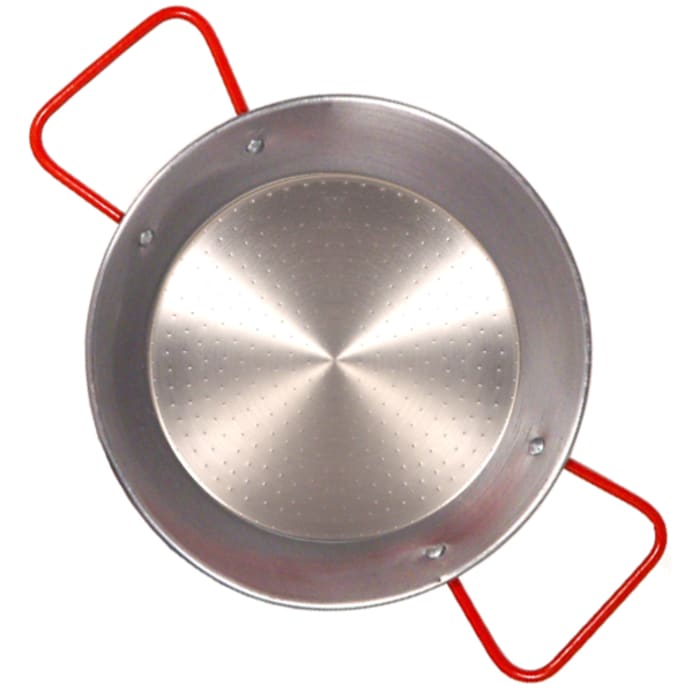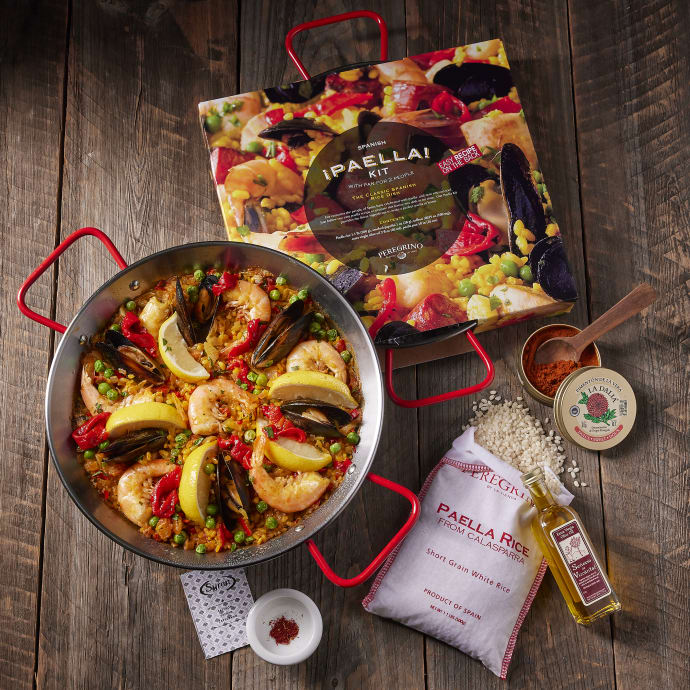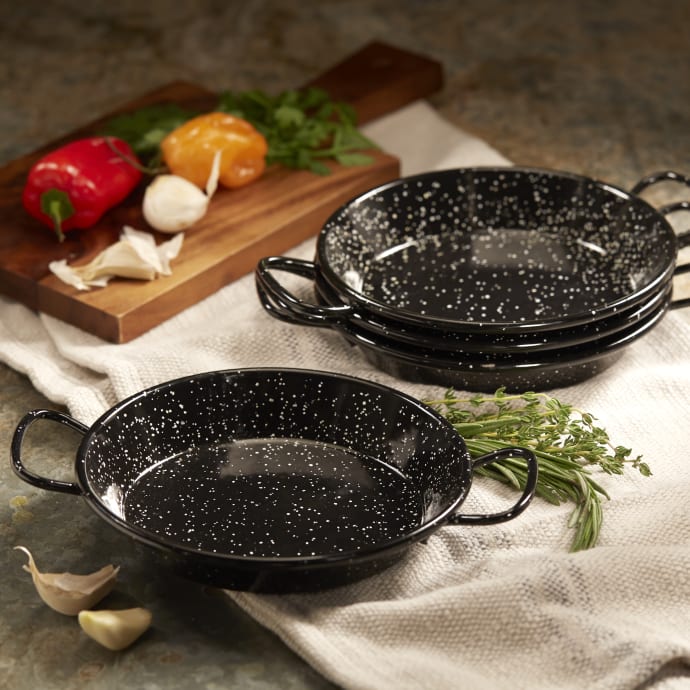Joe Yonan
In some ways, paella has more in common with risotto than with most baked rice dishes, such as pilafs. You build flavor by sauteing garlic, onion (or, in single-serving style, shallots) and a spice such as Spanish smoked paprika in olive oil, then you coat the rice in this mixture, helping seal it so it doesn’t leak starch and get mushy. The short-grain rice slowly swells as it absorbs the broth on the stove top, never covered, but rather than constantly stirring and gradually adding broth, you pour in all the hot liquid at once and occasionally swirl the pan as the paella gently bubbles. You finish it in the oven, still uncovered, then cover with foil only once it’s out, letting the rice finish cooking as the paella rests and cools. To get that crispy layer on the bottom, you put it back on the stove top for a final couple of minutes.
My favorite personal paella for a while used squid, scallions and cherry tomatoes. Now that I’m eating a mostly vegetarian diet, it has been helpful to remember that in Spain, paella includes all manner of ingredients. What unites them is the rice and the pan.
I flipped through “Paella!” and “Paella” and found ideas in both. Herraiz’s book, which has a nifty cover made to look and feel like the cloth bag that traditional Bomba rice is sold in, has very few vegetarian recipes. But I did see a mullet and roast pumpkin paella that inspired me to use small cubes of butternut squash, cooking them in the rice instead of roasting them separately. Casas’s book has a take on a simple vegetarian paella that features spinach, chickpeas and pine nuts; I simplified it even further and used the very non-Spanish flavor of Madras curry instead of my beloved smoked paprika. Traditionalists would be horrified, but Herraiz is not one of them; his book, in fact, includes a recipe for a “Return to India” paella that uses not just curry powder, but tamarind paste and coconut milk. Perhaps I could be forgiven.
One thing most Spaniards would probably not forgive is my choice to make my personal paellas in a small steel pan I bought in Paris. It’s not considered technically correct to refer to any dish as paella, in fact, if it’s made in anything but that traditional, shallow pan. The word, like a Moroccan tagine, refers to both the pan and the dish. But my paella pan is too big for a single-serving approach, so I and the Spaniards are just going to have to agree to disagree.
Or so I thought. My paella pan is 13 inches in diameter, making it appropriate for four or six. The paella for two we ate in Valencia came in a 10-inch pan. I’ve always assumed that was the smallest size available. But last week I logged on to LaTienda.com, a favorite source of all things Spanish, and noticed that I was wrong. There, for just under $13, was a carbon-steel paella pan measuring just under eight inches, designed to serve one. I clicked, I bought and I felt blasphemous no longer.
Yonan is author of the upcoming “Eat Your Vegetables: Bold Recipes for the Single Cook” (Ten Speed Press, August 2013). He can be reached through his Web site, www.joeyonan.com.
Recipes:
Spinach and Chickpea Paella for One
Squash and Artichoke Paella for One
Read full article...





